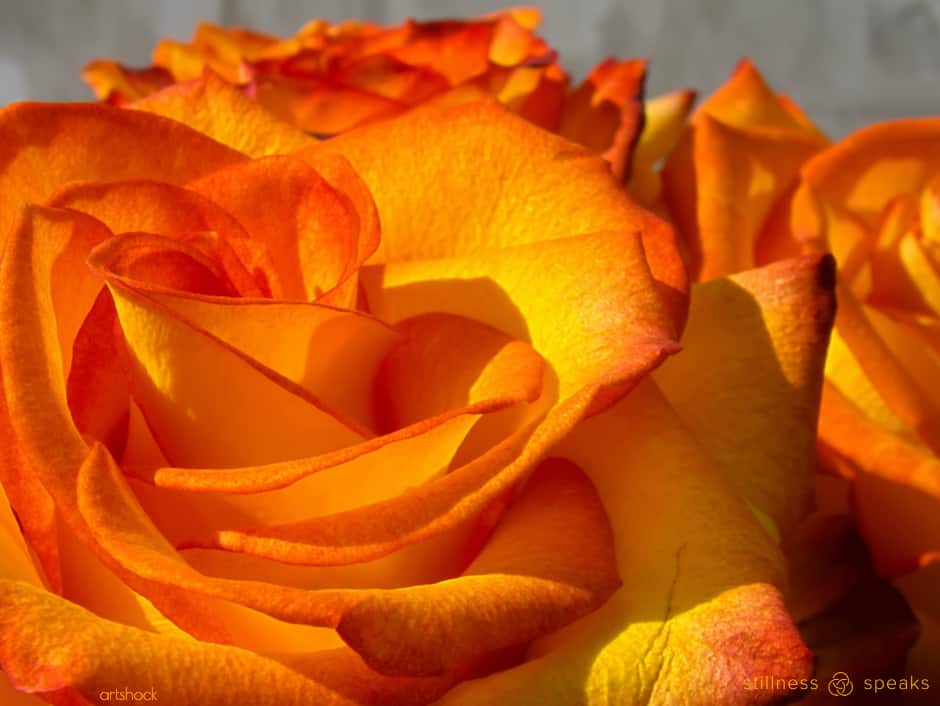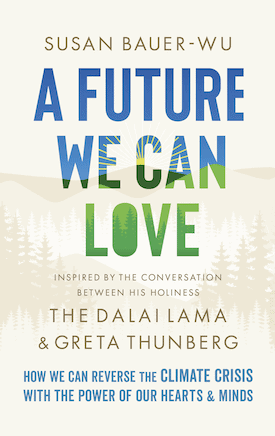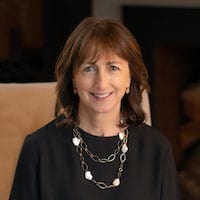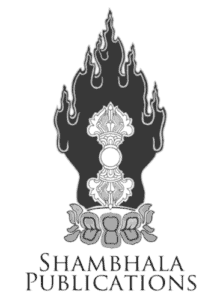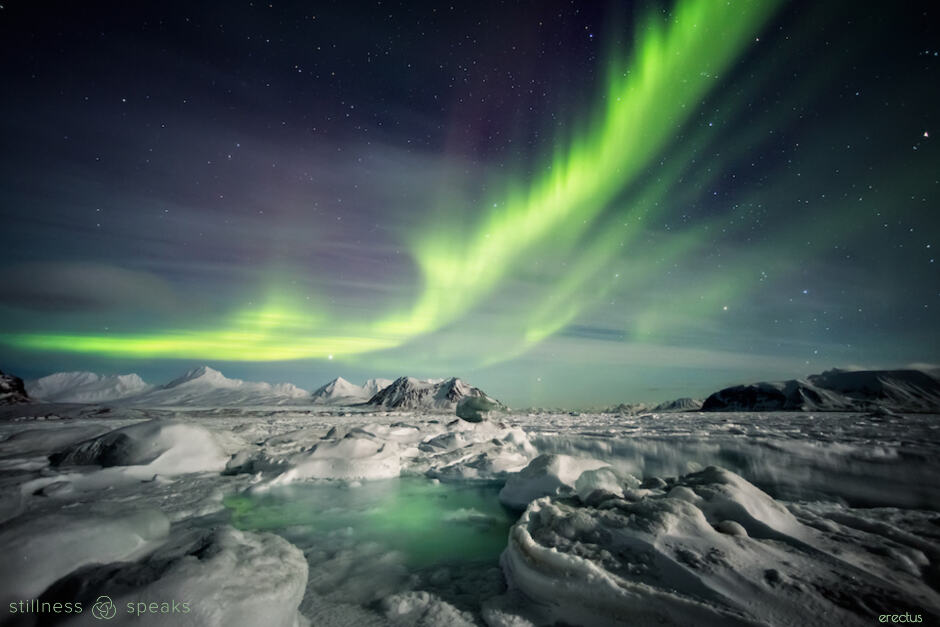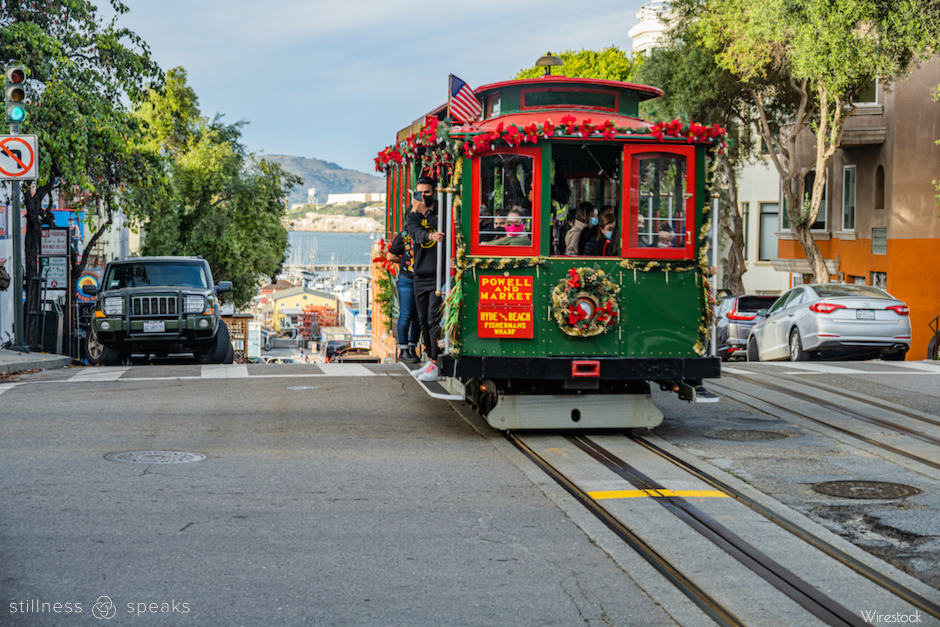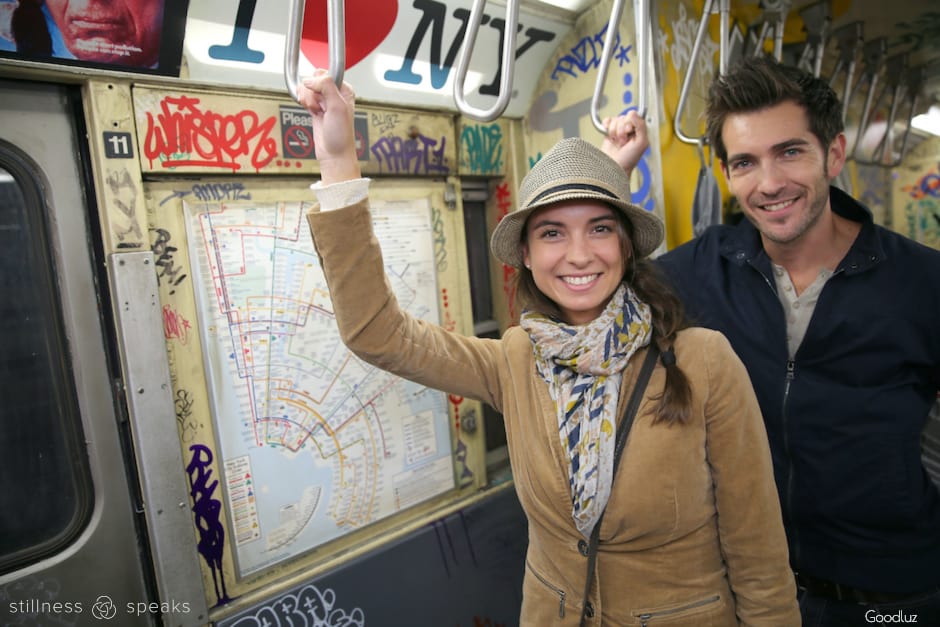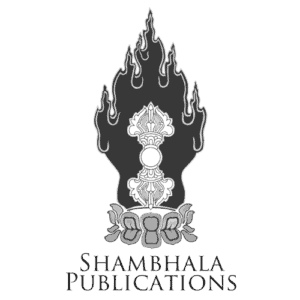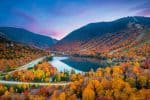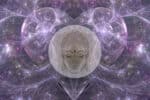“… “wonderment,” as Matthieu Ricard, the Buddhist monk charmingly calls it—in our relationship with nature (human nature included) … I marvel at the power of wonder not only to shine in the darkness and make us feel better but also to stir our will to action …”
“… With a different kind of attention —curious, trusting, open, and loving— we can find the wonders of right where we are …” ~ Susan Bauer-Wu
Wonderment is an understandable topic for us … but climate change? … and what does wonderment have to do with climate change? …
Climate change is of interest because it is something that is here and now … and wonderment is intrinsically about being present to what is here and now … and as the author’s opening quote suggests it stirs our will into action … so today we want to – briefly – explore the question :
Can we experience wonderment despite the despair of the looming devastating impact of climate change and the lack of urgent action on the global stage?
Turns out His Holiness The Dalai Lama (who has had an ongoing deep interest in climate change – for obvious reasons) and Greta Thunberg (a remarkable young lady who is known for challenging the world leaders to take substantive action to mitigate climate change since 2018, at age 15) had an inspiring conversation in January 2021 on this most challenging topic … and millions around the world took notice. Dalai Lama had written to Greta before this meeting: “It is encouraging to see how you have opened the eyes of the world to the urgency to protect our planet, our only home”
The conversation was arranged as part of Mind & Life Institute’s ongoing work. The Institute’s mission is to “… bring science and contemplative wisdom together to better understand the mind and create positive change in the world …” and to ensure “… that efforts to address mounting global challenges must take into account our inner lives, and how individual well-being contributes to collective flourishing …”
Susan Bauer-Wu, the President of the Institute created (with Stephanie Higgs) A Future We Can Love: How We Can Reverse The Climate Crisis With The Power of Our Hearts & Minds: Inspired by the Conversation Between His Holiness The Dalai Lama & Greta Thunberg, a deeply thought provoking and hopeful book that not only articulates the dire reality of the climate change problem but also offers a practical action plan … the book can be best summed up with two of the many testimonials:
“So many of us want to look away when it comes to this massive global problem. But this book pulls off the neat and crucial trick of bringing all of us into the conversation and giving us the tools to help out, without falling into the traps of resignation, avoidance, or denial.” ~ Dan Harris, author of 10% Happier and host of the 10% Happier Podcast
“A Future We Can Love is a profoundly moving personal reflection on the climate crisis. The book provides an unflinching overview of current science, then embraces a roadmap to solutions. How we shop, eat, and vote—our climate values matter. Susan Bauer-Wu interviews world-renowned climate scientists and augments their sobering facts with a healing vision. She shows us how to navigate these challenging times with compassion and love. In a world of eco-anxiety, Bauer-Wu’s wisdom inspires respect for our planet and all living things, along with a much-needed sense of hope and possibility.” ~ Roberta Baskin, journalist and board member, One Earth Philanthropy
In the Introduction Susan’s “argument for a reason {for the book} to exist” : “… the path to a future we can love starts with knowledge and proceeds, through our capacity and willingness to change, to action. Hence the four-part structure of this book: knowledge, capacity, will, action ...”
The book, of course, covers a vast range which would be outside the bounds of our single post preview … so we’ve selected an excerpt (from the section Will) that talks about Everyday Wonderment … because such everyday pause and action is the ultimate seed to an enduring and impactful action … a principle suggested by many others in the book, most notably Matthieu Ricard (the French Buddhist monk whose unofficial title is “happiest man in the world”) who, rightly, says:
“… The climate crisis really boils down to altruism versus selfishness. We don’t have three or five planets, we just have one, so we must do better with less.” …” which goes to the heart of the Climate Change issue, i.e., too much consumption from which stem all the other issues contributing to this massive global problem.
Matthieu who walks his talk and lives in a 3X3 meter hut … and offers a new way of thinking vis-a-vis “consumption and enough … and fulfillment” : “Tune to a beautiful landscape, or the face of an innocent child, or the face of a wise teacher, now you want to bring the best of yourself. And these things are also the most fulfilling.” Matthieu’s views on wonderment are also supported by his friend Dacher Keltner (a psychologist at UC Berkeley who studies awe). Dacher and his colleagues have done scientific studies that show:
“… in addition to being a source of motivation, wonderment increases altruism, because it is an opening of the senses to a reality bigger and greater than ourselves …”
Also, the books Details page on Shambhala offers another insightful (and more complete) summary of the book.
This post is part of our ongoing Shambhala Publications series that offers substantive previews of selections from Shambhala Publications new and classic titles …
All italicized text here is adapted from A Future We Can Love: How We Can Reverse The Climate Crisis With The Power of Our Hearts & Minds: Inspired by the Conversation Between His Holiness The Dalai Lama & Greta Thunberg by Susan Bauer-Wu with Stephanie Higgs, © 2023 by the Mind & Life Institute. Reprinted in arrangement with Shambhala Publications, Inc. Boulder, CO. Shambhala Publications has also generously offered a free downloadable PDF of the Table of Contents (link is at the bottom of the post).
You can purchase the book at Shambhala Publications or Amazon.
Everyday Wonderment
Talking to climate scientists reminds me that wonderment is part of their path. The sea ice specialist Don Perovich wants to tell us, for example, about working in the Arctic. “I wish that everybody could experience it,” he says, although he and I and my elephants would agree it’s better that not everybody can go. Let Don paint us a picture instead. “I’ve walked on frozen oceans under midnight suns. I’ve been up on the ice in November when it was so cold and so quiet you could hear your breath freeze, and above you are the dancing curtains of light of the aurora borealis,” he says, with “creatures beyond belief, green blobs of waterfall phytoplankton, polar bears, walruses.” Don says that his wondering, in graduate school, about how ice melts gave him an opportunity—“maybe an excuse”—to learn to scuba dive. “I remember one time I was diving, swimming along the side of the floe, and saw something out of the corner of my eye, really quickly. I kept on swimming. Then I saw it someplace else, just like a flicker, when you see things but don’t really see them. I kept on going, and I looked down, and right underneath me, just a few feet away, was a seal, swimming upside down, just looking at me. It would flick its tail and be gone, and then it would reappear. I don’t know who was more curious about the other, me or the seal.” Don stayed with the moment until it was “so cold I couldn’t keep my regulator in my mouth anymore,” and the seal swam on for other adventures. He tells this story in answer to a question about how he not only keeps doing his work but keeps loving it, knowing what he knows about what we’re doing to the Arctic. Wonderment keeps him going back.
Mind & Life, like many organizations these days, is doing a lot less travel for business than we used to. Unlike Don’s job requiring him to show up sometimes in the actual Arctic, we’ve come to see how much of the travel we were doing wasn’t necessary to our work; at the same time, we realized it was harming the planet. I’m also facing the fact that far-flung vacations on a whim are no longer an option, which is to say today I wouldn’t fly across an ocean to go on a safari even if the elephants didn’t mind. What do we do if we can’t justify flying somewhere different from our ordinary lives to get a hit of wonderment? I imagine many people who’ve had that luxury fear the answer must be to live smaller, sadder, less wonderful lives. A related question is what have people who couldn’t afford to go on exotic vacations anyway always done? I think it’s the same answer for both questions: With a different kind of attention—curious, trusting, open, and loving— we can find the wonders of right where we are. Jenny Odell helps me see what wonderment looks like in the Age of Enough.
We heard about Jenny’s love for a nearby rose garden, but she can also find wonderment on a city bus—or rather, since she’s in the Bay Area, a streetcar. “Once I accepted the fact that each face I looked at (and I tried to look at each of them) was associated with an entire life—of birth, of childhood, of dreams and disappointments, of a universe of anxieties, hopes, grudges, and regrets totally distinct from mine—this slow scene became almost impossibly absorbing. As [the painter David] Hockney said: ‘There’s a lot to look at.’” Jenny will tell you about making friends with two local crows, whom she encouraged to visit by placing a peanut each day on her apartment balcony. They quickly became regulars, and she gave them names: Crow and Crowson, since they are parent and child. As she describes, “I soon discovered that Crow and Crowson preferred it when I threw peanuts off the balcony so they could do fancy dives off the telephone line. They’d do twists, barrel rolls, and loops, which I made slow-motion videos of with the obsessiveness of a proud parent.” She started paying more attention to the crows after being curious enough to learn how smart they are—capable, for example, of recognizing human faces, which she took as an invitation to start a relationship. “Sometimes they wouldn’t want any more peanuts,” Jenny says, “and would just sit there and stare at me. One time Crowson followed me halfway down the street.”
Jenny walks around her neighborhood with a jeweler’s loupe in order to look at things magnified ten times. Already a dedicated birdwatcher and flora appreciator, she says this simple (and inexpensive) gadget has opened her eyes to the everyday world around her in new and amazing ways. “You have to get really close to something with the loupe. And then all of a sudden it pops into focus and it’s like this plant that you thought was smooth, it’s really hairy or something, you know?” Receiving the pocket-sized high-power magnifying glass as a gift from a thoughtful friend who noticed how much she liked his, she thought, “I’ll never be bored again.” Which has been said about the smartphone, but Jenny says the difference is that “it fills me with wonder instead of dread.”
On the other side of the country in Brooklyn, the meditation teacher and writer Sebene Selassie also talks of seeing the extraordinary in ordinary urban places. Like Jenny, Sebene (“like ‘Seven-A’ with a b,” she says, “instead of a v”) can find wonderment on a bus or, in her case, a subway. “Sometimes I like just to ride the subway,” she says, by which she means taking the podcast out of her ears or putting down her book to be present and just ride.12 “Over my nineteen years in this city, I have seen innumerable expressions of humanity on the subway—many beautiful, some brutal, some disturbing, many heartbreaking. I once saw a man punch a young woman in the face—a complete stranger, for no reason; he kept walking. Homeless people are ignored, and shamed, and dismissed every day (sometimes, I’m afraid to admit, by me).” Anyone who has ridden a New York City subway knows they aren’t always clean or peaceful; Sebene’s acknowledgment of that ugliness and suffering makes the wonderment more believable. “I have also seen countless people of every demographic help strangers with money, food, luggage, strollers, and directions,” she says. “I have witnessed collective head bopping, laughter, compassion, and amazement. I hear every language and accent imaginable. I have watched acrobats, tap dancers, tango, break dancers, and musicians from every part of the world. It’s like a secret underworld where all of humanity meets.”
Sebene allows that sometimes she gets frustrated with the city. Sometimes, “I want it to be the country and to have more space and stillness. I want to be ‘in nature’—as if there is anything that is not ‘natural’ in this universe.” She is not beyond fantasizing sometimes about moving upstate, she says. And I will continue to fantasize about meeting animals in the wild and flying to places I’ve never been. But I welcome her reminder that “sometimes you just ride the subway.” And sometimes it is wonderful.
Every spiritual tradition, including Buddhism, tells us that we don’t have to leave wonderment to accident and happenstance, either. We can create holy days (the original meaning of holidays) or holy moments anytime with ritual and intention that shift our consciousness, heighten awareness, and get us out of habitual, business-as-usual mode.
~ Susan Bauer-Wu
Stay tuned for more substantive previews of other books (both new and classic) in this ongoing Shambhala Publications series …
All italicized text here is adapted from A Future We Can Love: How We Can Reverse The Climate Crisis With The Power of Our Hearts & Minds: Inspired by the Conversation Between His Holiness The Dalai Lama & Greta Thunberg by Susan Bauer-Wu with Stephanie Higgs, © 2023 by the Mind & Life Institute. Reprinted in arrangement with Shambhala Publications, Inc. Boulder, CO. Shambhala Publications has also generously offered a free downloadable PDF of the Table of Contents (link is at the bottom of the post).
You can purchase the book at Shambhala Publications or Amazon.
And, click here for the free, downloadable PDF of the Table of Contents.
And, may you bring … everyday wonderment … in your life … and …
May you remain safe and healthy.
